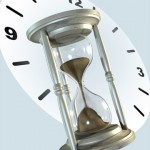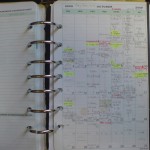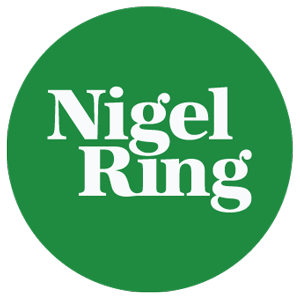 Whether you are using a paper-based Organiser or an electronic PDA it is important to get some shape and system in place before you start. It is well worth giving careful thought to what will serve you best. You are laying a foundation; if the foundation of a building is wrong the final structure will fail to perform in the intended way and however elegant it looks it will always be deficient.
Whether you are using a paper-based Organiser or an electronic PDA it is important to get some shape and system in place before you start. It is well worth giving careful thought to what will serve you best. You are laying a foundation; if the foundation of a building is wrong the final structure will fail to perform in the intended way and however elegant it looks it will always be deficient.
There are three major elements to the Organiser, and some refinements.
1. Calendar and Diary
The core is, of course, the time element. In the last posting we looked at the 2-page per day display where you have the whole day laid out before you including a) appointments, b) Do it list and, by the end of the day, c) a record of phone calls and other jottings. But how does this fit into a larger time frame? Before moving onto this let me suggest how this layout can be reproduced in a PDA.
Applying the method to a PDA
Appointments readily fit into a diary format but what about the all important Do it list? Some people find it convenient to keep a Task List or similar elsewhere but I do not find this works well. A colleague told me recently he keeps his on a whiteboard in the office. I am at a loss to know how he makes this work when he is out of the office!
For me it is important to be able to see the whole day at a glance and to have it readily accessible so that I can be monitoring the progress through the day. (Incidentally, I do not use my laptop for planning – it is too large to carry around at all times.) The whiteboard is extreme separation but even to hold the list elsewhere in you Organiser makes it less accessible and liable to be ‘lost’.
With my particular PDA it is possible to put untimed appointments into the ‘diary’ area. This works well for me as I just put many such ‘untimed appointments’ (i.e. my Do it list) in the early morning slot of each day. Not all PDAs will allow this and you will have to be creative to achieve the day-to-view display that I recommend. Maybe it would be possible to have appointments at one minute intervals – but be careful not to let this lead you into a false impression that this gives a priority order, say 7.01 to 7.10. The numbers (i.e. hours, minutes) mean nothing in this context – it is only a trick to beat the system, not significant in itself!
The larger timeframe
 Now each day is, of course, part of a larger timeframe. When planning it is important not only to order the detail of each day but also to plan on the basis of a month or year. This is particularly true when allocating the ‘boulders’ to the diary which probably need to be there 3 – 6 months in advance. These larger, high priority chunks of time could be a conference, a holiday with your family, etc. It is helpful to have a display of a month or year to get a feel of how busy you are. If asked to make an appointment and the easy option is to see if you are free on that day you may make an appointment without realising the days around it are already full and you have no time for other important matters. I recommend that your planning should be done with at least a month-to-view on display, possible even a year-to-view.
Now each day is, of course, part of a larger timeframe. When planning it is important not only to order the detail of each day but also to plan on the basis of a month or year. This is particularly true when allocating the ‘boulders’ to the diary which probably need to be there 3 – 6 months in advance. These larger, high priority chunks of time could be a conference, a holiday with your family, etc. It is helpful to have a display of a month or year to get a feel of how busy you are. If asked to make an appointment and the easy option is to see if you are free on that day you may make an appointment without realising the days around it are already full and you have no time for other important matters. I recommend that your planning should be done with at least a month-to-view on display, possible even a year-to-view.
In the next posting we will look at the second important element of organising an Organiser, the portable filing system.
